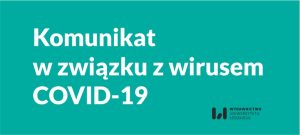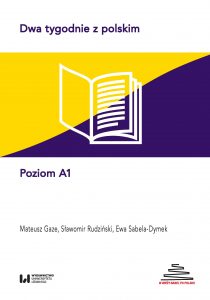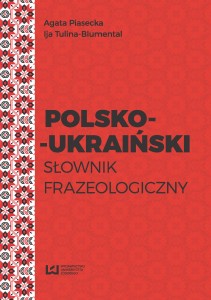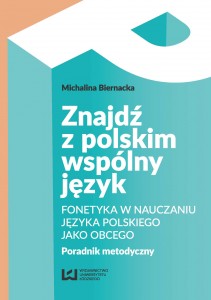Acta Universitatis Lodziensis. Folia Philosophica. Ethica-Aesthetica-Practica | Nr 40: Urban Images (2) / Wdrażanie humanistyki
Opublikowano: 16 sierpnia 2022
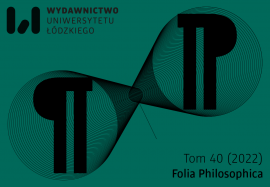
Folia Philosophica. Ethica – Aesthetica – Practica to czasopismo naukowe poświęcone zagadnieniom filozofii praktycznej, filozofii kultury i szeroko pojętej aksjologii. Służyć ma ono pogłębionej filozoficznej refleksji nad problemami współczesnego życia społecznego i kształtem przestrzeni publicznej. Na łamach publikowane są teksty dotyczące badań nad etycznymi, estetycznymi, a także prawnymi i politycznymi aspektami współczesnych praktyk społecznych i kulturowych oraz prace zajmujące się zagadnieniami filozofii praktycznej i estetyki z perspektywy historycznej, jak też stricte filozoficzno-teoretycznej.
Redaktorkami tomu czterdziestego “Urban Images (2) / Wdrażanie humanistyki” są Dr hab. Prof. UŁ Wioletta Kazimierska-Jerzyk i Dr hab. Agnieszka Gralińska-Toborek.
W numerze:
Lost Symbols in the Historic City of Puebla in Mexico
Adriana Hernández Sánchez, Christian Enrique De La Torre Sánchez
Since its origin, the city of Puebla has had representative elements in its public spaces that have survived for a long time, they are ornamental and utilitarian objects which are landmarks of the city. Street furniture is a benchmark of identity too. All elements have legends, they are references that have given identity to streets and avenues. Natural elements also refer to a city’s identity, like trees. But the natural element that defined origin, trace and growth of the city is one of the least visible. In the sixties, the San Francisco River was piped, as a sign of the new modernity, and today it is a boulevard where thousands of cars pass. Thus, bridges and other types of elements that the population still remember, mainly the elderly, have been forgotten. In recent years, some initiatives have emerged to rescue the historical memory of daily life and the revaluation of representative objects of the city center, such as the Casa Analco Community Museum project, coordinated by the Faculty of Architecture of BUAP in collaboration with residents of the Analco neighborhood. This article discusses both the monuments, their relics, elements of nature that shape the city’s identity, as well as the gradual loss of these symbols.
Changing the Landscape of the City Outskirts. Bon Pastor (Barcelona)
Antoni Remesar, Javier Vergel, Augusta Barreiro, Tatiana Chávez, Laura Chaves
The paper presents the territorial and axiological context and the peculiarities of the participatory project developed by the Polis Research Centre and the Bon Pastor Neighbourhood Association, as well as the first steps in the design of two interventions. The first intervention, the Wall and Party Walls in Rodriguez de la Fuente Square, is proposed within the framework of the sustainable development strategies of Barcelona City Council. Its main objective is to achieve thermal insulation of the affected dwellings, thus contributing to the well being of the residents and to the reduction of CO2 emissions into the atmosphere. Besides, it is aimed to solve landscape discontinuity. In the lower part of the party walls, there is a wall, a kind of plinth that the residents have chosen as a site for the expansion of the work on the civic remembrance of the neighbourhood. There, the “Living Memory” space will be set up, reserved for interventions by children from the quarter’s schools through a work programme run in cooperation with them. The second intervention is the case of the centennial Mulberry Tree classified as a tree of local interest. In 2018, the mulberry tree suffered some damage from thugs who threw firecrackers inside. Therefore, the need was pointed out to reorganise the space around the tree in order to create dissuasive effects and preserve its integrity. These are preliminary studies to be discussed by the agents involved in the project: the Sant Andreu District, the IMPUQV (Institut Municipal del Paisatge Urbài la Qualitat de Vida), and the Bon Pastor Neighbourhood Association.
The Conservation of Murals – A New Trend in Protecting Works of Art
Tytus Sawicki
In recent years, a trend has emerged in the field of art conservation, the aim of which is to protect street art objects. Attempts to conserve murals face many problems. This is due to various factors – lack of time distance to this type of objects, difficulties in assessing their artistic value, frequent lack of interest of artists in the conservation of their works, material impermanence of murals, their often-occasional nature; also, the fact that most of these objects are not legally protected. The paper discusses the problems faced by an art restorer who wants to save murals. Examples of murals are presented, the conservation of which is not possible, among others, due to the fact that the houses on which they were painted are intended for demolition. There are also examples of murals whose rescue from destruction gained public approval and the conservation of which was carried out. The paintings are in a very poor condition. This is a feature of most murals, which are usually made on old, unrepaired plasters with low-quality paints. Their maintenance is a very difficult task. The presentation shows the various stages of conservation of works lacated in Warsow. The conservation of the murals is carried out in order to preserve street art facilities. Apart from the involvement of art conservators, social support for this type of activity is also important. However, one should be aware that most of murals have no chance of becoming a permanent part of the city landscape. Their fate will be determined by chance.
Anna Adamus-Matuszyńska, Piotr Dzik
Advertising is one of the commonly visible elements of the urban landscape (real and virtual). It also does not require proof that advertisements of cities as such are also part of their “cityscape.” Since at least the nineteenth century, cities have advertised themselves as attractive places to live, visit, or do business. Therefore, the following research question can be asked: How do Polish cities present themselves in advertisements one can find in the landscape? The study assumes that each advertisement should clearly identify the sender and indicate its specific characteristics, distinguishing itself from its competitors. Polish cities began to use logos and slogans as a mechanism of description and distinction after 1990, when socioeconomic changes started. There are quite a few studies on this activity, but most of them are single case studies. Therefore, the authors decided to examine a relatively large sample of Polish cities, which allows for statistical analysis. Analysis of the logo and slogan content allows the authors to examine the desired image or the projected identity of Polish cities. The methods were chosen because they admit qualitative and quantitative analysis, especially when there is a sufficiently large sample. Therefore, the survey covered all towns and cities with more than 20,000 inhabitants in Poland. There are 218 such towns in total. The analysis was carried out in the first half of 2021. In conclusion, the authors find that the advertising of Polish cities is embedded in the past, promotes resources (substance), sometimes geographical location, but rarely refers to famous characters and human potential. And such a picture of these cities one may find on outdoor advertisements, which sometimes produce dissonance when accompanying modern buildings or new transport solutions in the city.
Estetyczne kategorie unikatowości i osobliwości oraz ryzyko ich użycia w kontekście aksjologicznym
Jowita Mróz
Artykuł jest poświęcony „unikatowości” i „osobliwości” – zarówno jako terminom, które funkcjonują w ramach dyskursu teoretyczno-estetycznego, jak i wyrazom odgrywającym istotną rolę w języku potocznym. Poza kontekstem estetyki i filozoficznej refleksji nad sztuką są one powszechnie wykorzystywane przez podmioty realizujące zadania z zakresu polityki społeczno-kulturalnej do promowania wydarzeń, zjawisk i obiektów, mimo iż zarówno ich etymologia, semantyka oraz pragmatyka językowa wskazują, że są problematyczne. Mają bowiem w swoje definicje leksykalne wpisane wartościowanie, a także nabierają dodatkowej wartości oceniającej w różnych kontekstach. Ponadto, bazując na słownikowych definicjach dostrzec można, że „unikatowość” i „osobliwość” są wyrazami funkcjonującymi w rodzinie semantycznej stwarzającej istotne ryzyko zatarcia znaczeń poszczególnych słów, czego efektem jest także niejednoznaczność w estetyczno-normatywnej ocenie zjawisk opisywanych za pomocą „unikatowości” i „osobliwości”, nawet jeśli ujmowane są ściślej, jako terminy naukowe funkcjonujących w dyskursie teoretyczno-estetycznym. Analiza źródłosłowów, charakterystyka normatywnego potencjału „unikatowości” i „osobliwości” oraz wyrazów, które są im pokrewne, a także podkreślenie roli kontekstu, w jakim występują, zestawiona z podstawowym ich znaczeniem w wybranych językach nowożytnych, pozwoli uwidocznić kluczowe problemy językowe w doświadczeniu potocznym, ale również wskazać istotne z punktu widzenia zagadnień specjalistycznych różnice terminologiczne.
Jak podpisywać dzieła sztuki w przestrzeni publicznej? Problematyka i wybrane przykłady
Aleksandra Dudek
Mimo iż przestrzenie miejskie nasycone są dziełami sztuki, pełniącymi ważne funkcje estetyczne, społeczne, edukacyjne, historyczne, obiekty te często są przez odbiorców niezauważane, nierozumiane lub nieidentyfikowane jako sztuka. Autorka stawia tezę, że jedną z przyczyn takiego stanu rzeczy jest brak profesjonalnych podpisów. Celem tekstu jest analiza tablic informacyjnych wybranych obiektów znajdujących się w Łodzi. Porównanie zebranych przykładów wskazuje na różnorodne braki w treści podpisów, ich nieczytelność, niewłaściwe umiejscowienie, a nawet zupełne pominięcie jakiegokolwiek tekstu informującego o danym dziele. Poddane analizie zostały dwadzieścia dwa obiekty wykonane po II wojnie światowej, reprezentujące różne gatunki sztuki i typy przestrzeni. Artykuł kończą lista postulatów, których spełnienia wymaga prawidłowe oznaczanie dzieł sztuki (sporządzona na wzór dziesięciopunktowego przewodnika opracowanego przez Muzeum Wiktorii i Alberta w Londynie) oraz propozycja przykładowej tablicy (dotyczącej konkretnego muralu), która mogłaby stać się rozwiązaniem standardowym.
Zapraszamy do lektury!
Komentarze
Ten post dostępny jest także w języku: angielski


